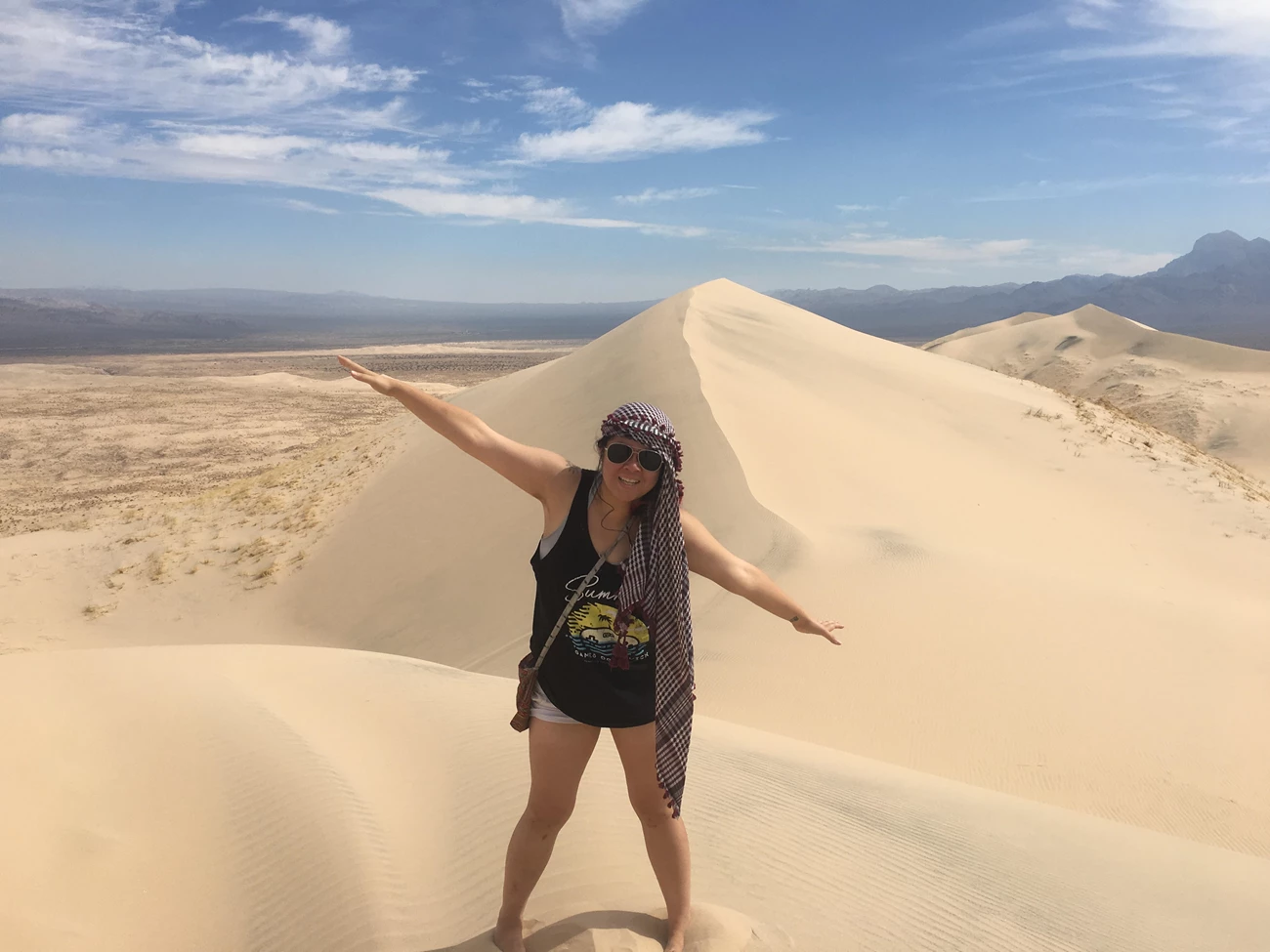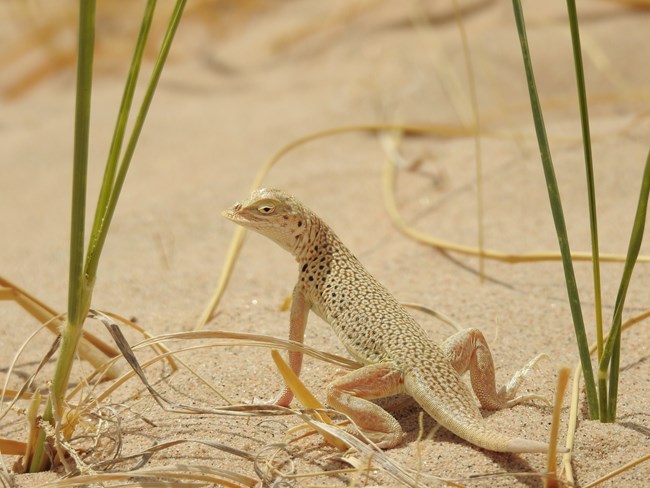
B Michel, NPS Sweeping Vistas of Singing SandThe spectacular and majestic Kelso Dunes are our most popular hike for good reason. When hikers reach the summit, they are rewarded with a surreal backdrop of sand that seems to extend forever. Although this is the most popular trail at the Mojave Preserve, potential hikers can still expect solitude.Hiking Safely
Dunes GeologyRangers frequently get asked, "why are the dunes where they are?" Although it seems like they’re in the middle of nowhere, there's good logical sense to the dunes' location.
Booming DunesOnly seven known sand dune fields in North America produce booming, and the Kelso Dunes are one of them! It's a deep, eerie, rumbling sound you can feel in your bones; a rumbling vibration through your entire body. The best way to hear the booming is to have a big group all on the crest at the same time trying to shove off as much sand as possible, like an avalanche. Visitors will have more luck with this if they are on a crest no one has walked on for awhile.

B Michel, NPS Notable Animals of the DunesThe Kelso Dunes contains seven species of endemic insects. Endemic means that these species live on the dunes and nowhere else in the entire world. They include the Kelso dunes Jerusalem cricket, the Kelso Dunes giant sand treader cricket, and the Kelso dunes shieldback katydid.During your visit, you may see lizards, especially the Mojave Fringe-toed lizard, which is not endemic but is rare elsewhere. Kit foxes, Kangaroo rats, Jackrabbits, Coyotes, Sidewinders, and Desert tortoises can also be found here. While observing any kind of wildlife in any situation, remember to keep your distance. The first rule of wildlife photography is that if an animal changes its behavior because of you, it means you are too close. 
NPS Photo Rules and Regulations
|
Last updated: May 9, 2021
